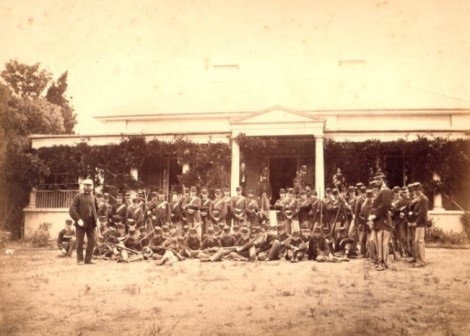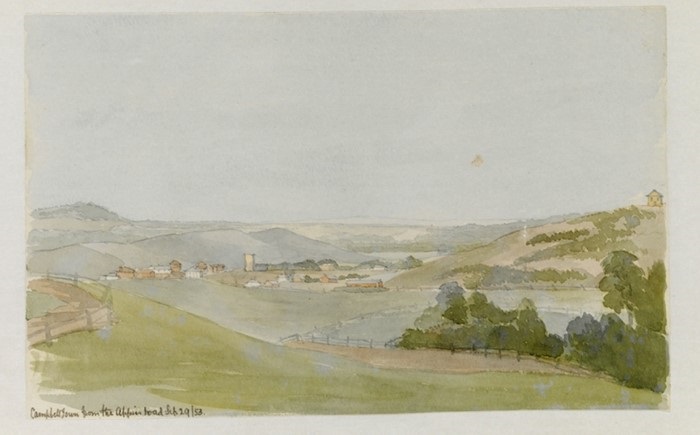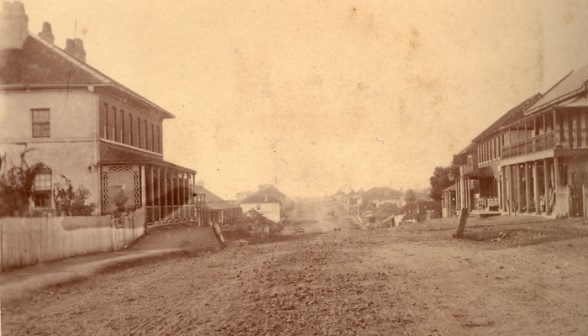St Mark's Collegiate School, Macquarie Fields
The St Mark's Collegiate School was situated in Macquarie Field House(PDF, 50KB) which was built in the vicinity of Meehan's Castle. The Rev. George Fairfowl Macarthur, removed his school from St. Mark's, Darling Point, or Alexandria as it was then named, and established it at Macquarie Fields in January, 1850, under the name of "St. Mark's Collegiate School." Here he conducted a very successful boarding school until the end of 1868, when at the urgent request of The King's School authorities at Parramatta he accepted an appointment as headmaster of that school in January, 1869. Some of his masters, and about 42 of his Macquarie Fields boys accompanied him. St. Mark's School ceased to exist at the end of 1868. The school has the honour of having the first Cadet unit to be raised on Australian soil. The photo below is the oldest photo in the Local Studies Collection, Campbelltown City Library.

(Image Sourced from Campbelltown City Library Local Studies Collection)
A view into the valley
Looking across Campbelltown in 1860, a watercolour by Henry Grant Lloyd. Painted from the top of the hill near the original St John's Catholic Church, it looks down into the valley and at far right you can see St Peter's Anglican Church(PDF, 379KB), and behind it, a steam train hurtling along the newly-opened railway line.

(Image sourced from Dixson Library, State Library of New South Wales)
The Main Street
By the 1860s the main street was lined with substantial stone buildings (although the road itself remained dirt, or mud). In this view, looking north, the famous row of Georgian houses(PDF, 413KB) is at the right. On the left is the palatial Patrick's Hotel, built by Anne Byrne, and later known as Alpha House. It was a major landmark for generations, but was demolished in 1938 to make way for The Good Intent Hotel - which in turn was demolished to create Campbelltown Mall in 1984.

(Image sourced from Gore Family Collection)